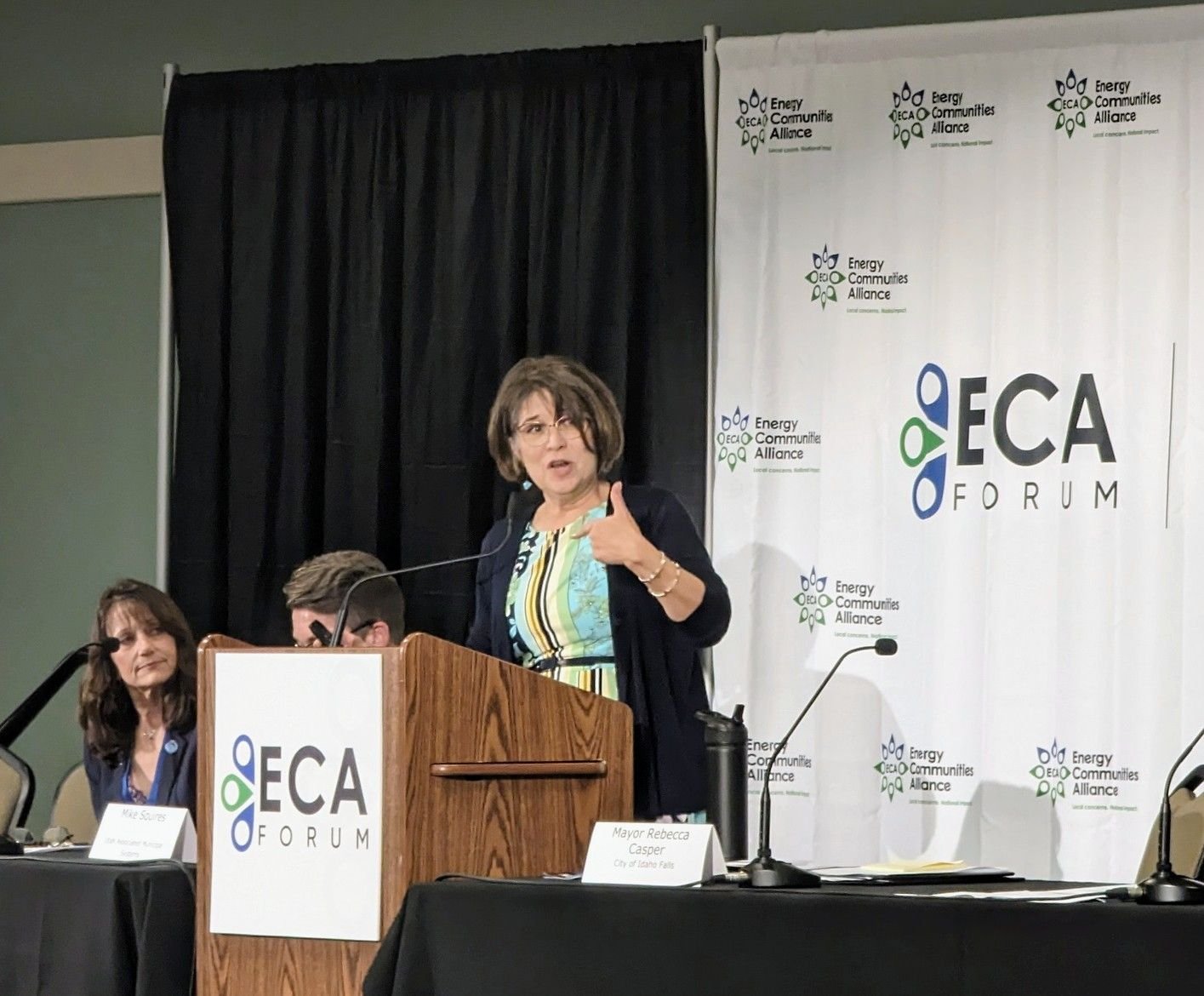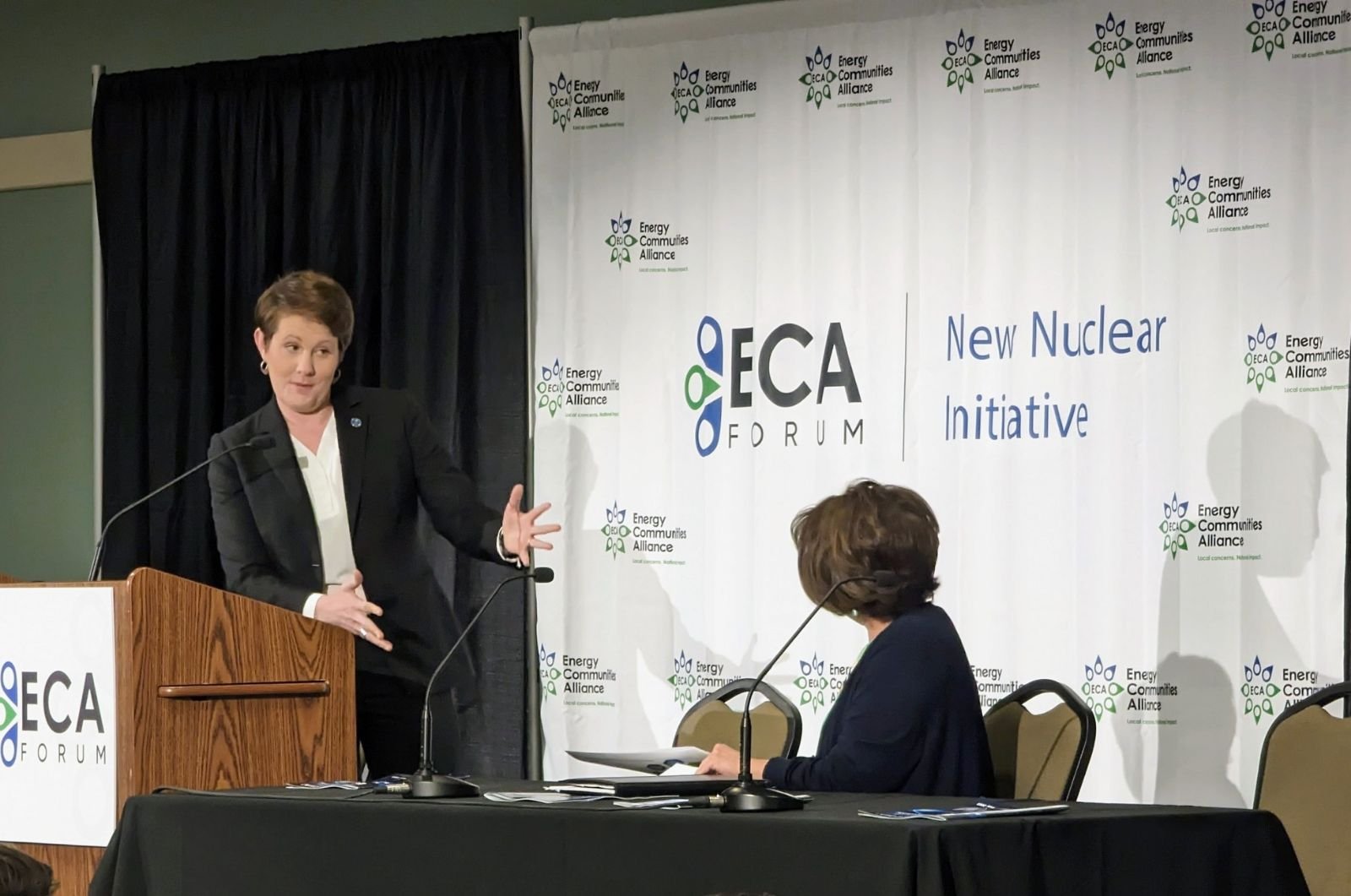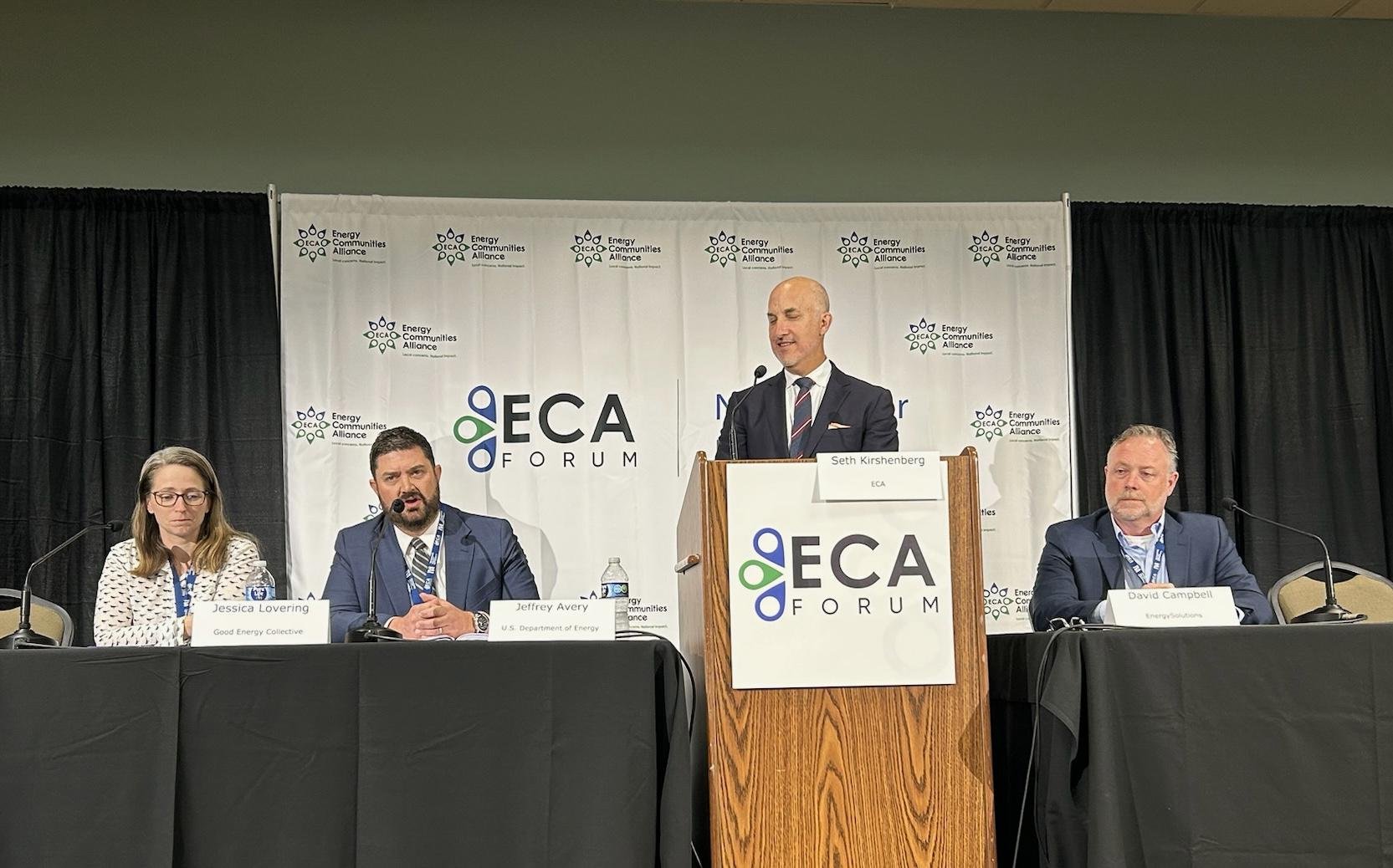3 Takeaways from Day 1 of the ECA New Nuclear Development Forum
On May 18, ECA kicked off the New Nuclear Development Forum: Building Capacity and Opportunity in Paducah, KY. Over 200 stakeholders, including federal, local, and tribal officials; new nuclear developers and contractors; international nuclear host communities; union leaders; and think tanks, gathered to exchange ideas and lessons learned about the next generation of nuclear energy.
Day 1 of the Forum included a keynote address from Dr. Kathryn Huff, Assistant Secretary for the Office of Nuclear Energy. Discussions throughout the day addressed case studies from communities developing new nuclear, in addition to panels on how to leverage existing infrastructure, adding nuclear to the mix in an all-of-the-above energy strategy, collaborating with utilities and developers, and lessons we can learn from advanced nuclear development abroad.
#1: Communities remain the key to success for new nuclear development.
In every aspect of the new nuclear development process, local governments and communities are the key pieces to the puzzle. As panelists noted, local governments are leading the charge to bring new nuclear to their communities by establishing partnerships with developers and building relationships with utilities and federal offices. Community groups such as reuse organizations and chambers of commerce play a role, too, in building community buy-in.
Case studies from Idaho and Paducah today underscored the range of local stakeholders involved, from Mayors and councils to state regulators and utilities. Communities from Canada and Europe also shared successes and challenges in their experiences with nuclear energy, noting several common focuses as their American counterparts, including regulatory issues and communicating with constituents about the benefits of new technologies.
#2: DOE is making tangible progress on new nuclear development.
In her keynote address, Assistant Secretary Kathryn Huff outlined some of the progress DOE has made in recent years, including the Office of Nuclear Energy's (NE) and Office of Clean Energy Demonstration's (OCED) collaboration on the Advanced Reactor Demonstration Program. Additionally, Dr. Huff highlighted that NE is making progress on the back-end of the fuel cycle as well, as the office is developing its consent-based siting plan focused on communities and environmental justice.
NE is also taking action to continue exploring new technologies supported by the Bipartisan Infrastructure Law and Inflation Reduction Act. "We're ready with this technology, and it's important we act on it," said, Dr. Huff.
#3: There is no one-size-fits-all approach for nuclear energy.
A through-line recognized in each panel today was the unique situation each community will face when considering deployment of new nuclear technology. What type of reactor technology is most suitable for the community? Can land be reused to make way for a nuclear projects or a coal-to-nuclear transition? What are the unique regulatory and utility situations do communities need to consider? Can nuclear energy help a community reach decarbonization goals?
These distinct paths to new nuclear highlight the importance of bringing together all of the relevant stakeholders at the Forum to learn about each others' successes and challenges.



